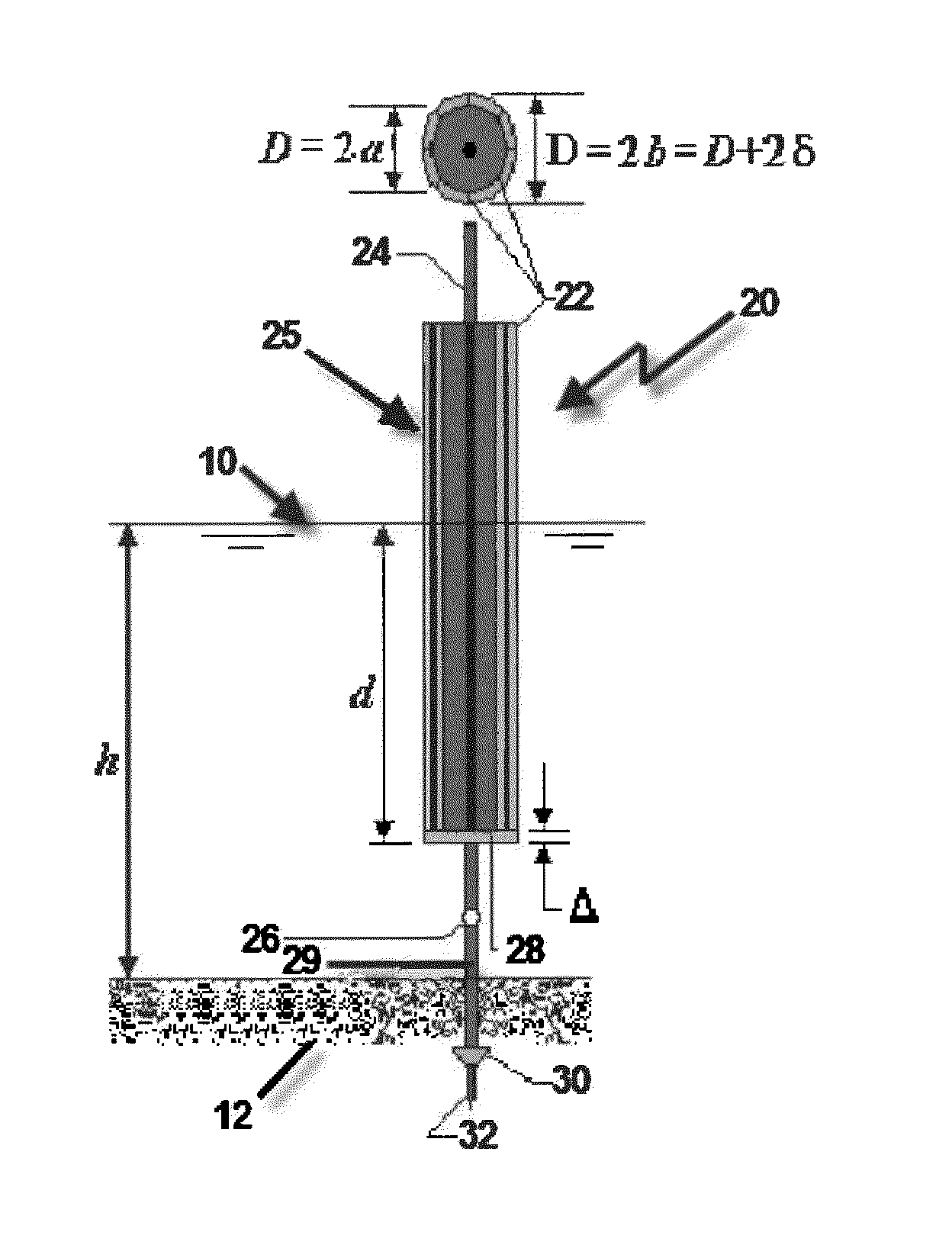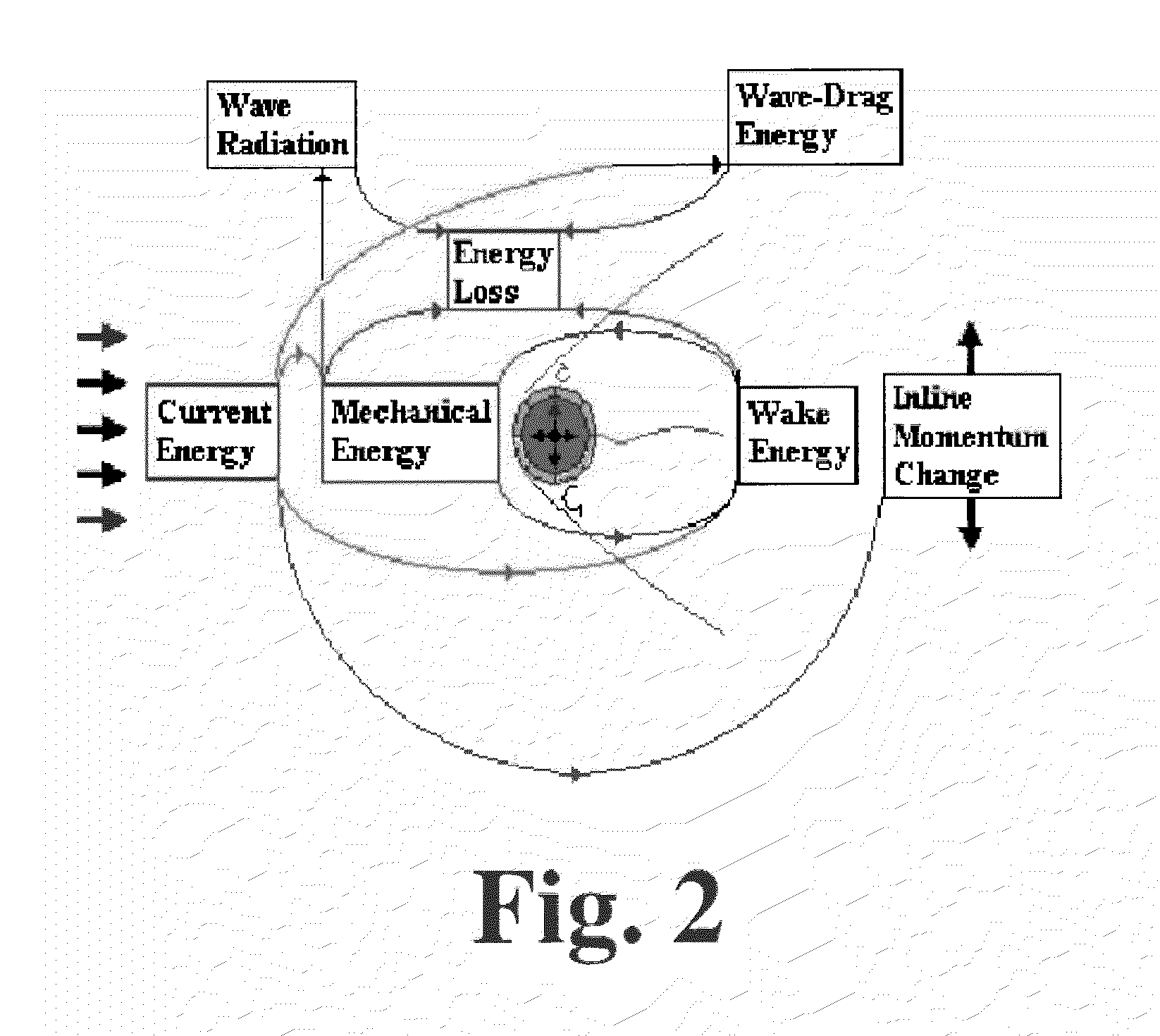Articulated Bed-Mounted Finned-Spar-Buoy Designed for Current Energy Absorption & Dissipation
a technology of current energy absorption and dissipation, which is applied in the direction of stream regulation, special-purpose vessels, transportation and packaging, etc., can solve the problems of buoy motions that become unstable at certain current speeds, ship handling and shoreline erosion, and navigation problems, so as to prevent the drift of sand bars
- Summary
- Abstract
- Description
- Claims
- Application Information
AI Technical Summary
Benefits of technology
Problems solved by technology
Method used
Image
Examples
example
[0093]Sand bars in the Mississippi-Missouri river system pose navigation problems for the mariners on the rivers. As stated earlier, these bars are normally marked by fast-water buoys by the U. S. Coast Guard. Unfortunately, these buoys are at times lost due to either boat collisions or extreme flow events. In addition, the bars appear, disappear and migrate near river bends. As a result, a fast-water buoy might be at a site formerly occupied by a bar. The new position of the bar would, then, be unmarked and, as a result, the bar would be a navigation hazard.
[0094]In the Mississippi-Missouri river system, the approximate nominal current range is from 3 ft / s to 10 ft / s. Consider the deployment of an 8-fin FSB in 6 feet of water, where the current is uniform from the bed to the free surface. Referring to the sketch in FIG. 1, the draft (d) of the FSB is 5.5 ft, and the spring-loaded hinge is at z=−R=−6 ft. That is, the point of rotation is on the bed. The free-board of the FSB is 3 ft...
PUM
 Login to View More
Login to View More Abstract
Description
Claims
Application Information
 Login to View More
Login to View More - R&D
- Intellectual Property
- Life Sciences
- Materials
- Tech Scout
- Unparalleled Data Quality
- Higher Quality Content
- 60% Fewer Hallucinations
Browse by: Latest US Patents, China's latest patents, Technical Efficacy Thesaurus, Application Domain, Technology Topic, Popular Technical Reports.
© 2025 PatSnap. All rights reserved.Legal|Privacy policy|Modern Slavery Act Transparency Statement|Sitemap|About US| Contact US: help@patsnap.com



